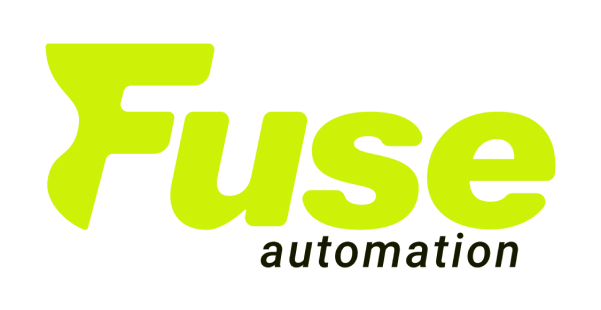Automated Dispensing Advantages
Automated Dispensing: Revolutionizing Manufacturing Processes
In today’s fast-paced manufacturing environment, efficiency, accuracy, and consistency are paramount. As industries strive to meet increasing demand while maintaining high product quality standards, automated dispensing systems have emerged as indispensable tools for optimizing production processes. From adhesive application to fluid dispensing and beyond, automated dispensing offers a myriad of advantages that streamline operations and enhance overall productivity. In this article, we delve into the various benefits of automated dispensing and explore how it is revolutionizing manufacturing across diverse industries.
Precision and Accuracy:
One of the primary advantages of automated dispensing systems is their ability to deliver precise and accurate amounts of material with unparalleled consistency. Advanced robotic dispensers equipped with precision control mechanisms can dispense fluids, adhesives, sealants, or coatings with micron-level accuracy, ensuring uniformity and repeatability in every application. This precision is especially critical in industries such as electronics, medical devices, and aerospace, where even minor deviations can lead to costly defects or performance issues.
Increased Efficiency and Productivity:
By automating the dispensing process, manufacturers can significantly increase efficiency and productivity compared to manual methods. Automated dispensing systems operate continuously without the need for breaks, reducing downtime and maximizing throughput. Furthermore, these systems can perform repetitive tasks at high speeds with minimal error, allowing manufacturers to meet tight production deadlines and scale up their operations to meet growing demand. As a result, automated dispensing helps companies achieve greater output and profitability while minimizing labor costs and resource wastage.
Improved Process Control and Quality Assurance:
Automated dispensing systems offer superior process control and real-time monitoring capabilities, enabling manufacturers to maintain strict quality standards and ensure product consistency. By programming precise dispensing parameters and implementing feedback mechanisms, manufacturers can closely monitor dispensing accuracy, volume, and distribution, identifying and addressing any deviations or anomalies promptly. This proactive approach to quality assurance helps minimize defects, rework, and scrap, ultimately enhancing product quality and customer satisfaction.
Versatility and Flexibility:
Modern automated dispensing systems are highly versatile and adaptable to a wide range of applications and materials. Whether dispensing liquids, pastes, gels, or powders, these systems can be customized with interchangeable dispensing heads, nozzles, and valves to accommodate different viscosities, flow rates, and dispensing patterns. Additionally, automated dispensers can be integrated into existing production lines or configured as standalone units, providing manufacturers with the flexibility to optimize their processes according to specific requirements and workflows.
Safety and Ergonomics:
Automated dispensing systems contribute to a safer and more ergonomic working environment by reducing exposure to hazardous materials, repetitive motions, and ergonomic strain associated with manual dispensing methods. By automating tasks that pose potential health and safety risks to workers, such as handling toxic chemicals or operating heavy equipment, manufacturers can minimize workplace accidents and injuries while enhancing employee well-being and morale.
Cost Savings and Return on Investment:
While the initial investment in automated dispensing systems may seem significant, the long-term cost savings and return on investment (ROI) they deliver make them financially attractive for manufacturers. By minimizing material waste, reducing labor costs, and improving process efficiency, automated dispensing systems help lower overall production costs and enhance profitability over time. Additionally, the increased throughput and consistency achieved with automated dispensing translate into higher output volumes and greater revenue potential, further bolstering the ROI of these systems.
Reduced Environmental Impact:
Automated dispensing systems contribute to sustainability efforts by minimizing material consumption, energy usage, and environmental waste. With precise dispensing control and optimized material utilization, manufacturers can minimize excess material usage and reduce the need for chemical cleaning agents or solvents. Furthermore, automated dispensers can operate in closed-loop systems that recycle unused materials, further reducing waste and environmental impact. By adopting automated dispensing solutions, manufacturers can align with sustainability goals and minimize their carbon footprint while maximizing operational efficiency.
Rapid Changeover and Adaptability:
In today’s dynamic manufacturing landscape, the ability to quickly adapt to changing production requirements and market demands is crucial for staying competitive. Automated dispensing systems offer rapid changeover capabilities, allowing manufacturers to switch between different products, materials, or dispensing configurations with minimal downtime. Whether adjusting dispensing parameters, changing material types, or reprogramming dispensing patterns, these systems enable manufacturers to respond swiftly to market trends and customer preferences, ensuring agility and versatility in their operations.
Enhanced Product Innovation and Customization:
Automated dispensing technology empowers manufacturers to innovate and differentiate their products by offering greater design flexibility and customization capabilities. With precise control over material deposition and distribution, manufacturers can create intricate patterns, textures, and finishes that enhance product aesthetics and functionality. Additionally, automated dispensing enables the integration of advanced features such as microencapsulation, encapsulation, and multi-material printing, opening up new possibilities for product development and customization. By leveraging automated dispensing systems, manufacturers can unleash their creativity and bring innovative products to market faster and more efficiently.
Regulatory Compliance and Documentation:
In regulated industries such as pharmaceuticals, food and beverage, and automotive, compliance with stringent quality and safety standards is paramount. Automated dispensing systems help manufacturers meet regulatory requirements by providing comprehensive documentation, traceability, and audit trails for every dispensing operation. By recording dispensing parameters, material usage, and process parameters in real-time, these systems facilitate compliance with industry regulations and streamline the certification and validation processes. Furthermore, automated dispensing solutions can generate detailed reports and certificates of conformance, ensuring transparency and accountability throughout the manufacturing process.
Conclusion
The advantages of automated dispensing systems extend far beyond operational efficiency and cost savings, encompassing a wide range of benefits that drive innovation, sustainability, and competitiveness in today’s manufacturing landscape. By harnessing the power of automation, manufacturers can optimize their processes, enhance product quality, and unlock new opportunities for growth and differentiation. As automated dispensing technology continues to evolve and integrate with emerging technologies such as artificial intelligence and Industry 4.0, its transformative impact on manufacturing will only continue to expand, paving the way for a future of smarter, more efficient, and more sustainable production.
